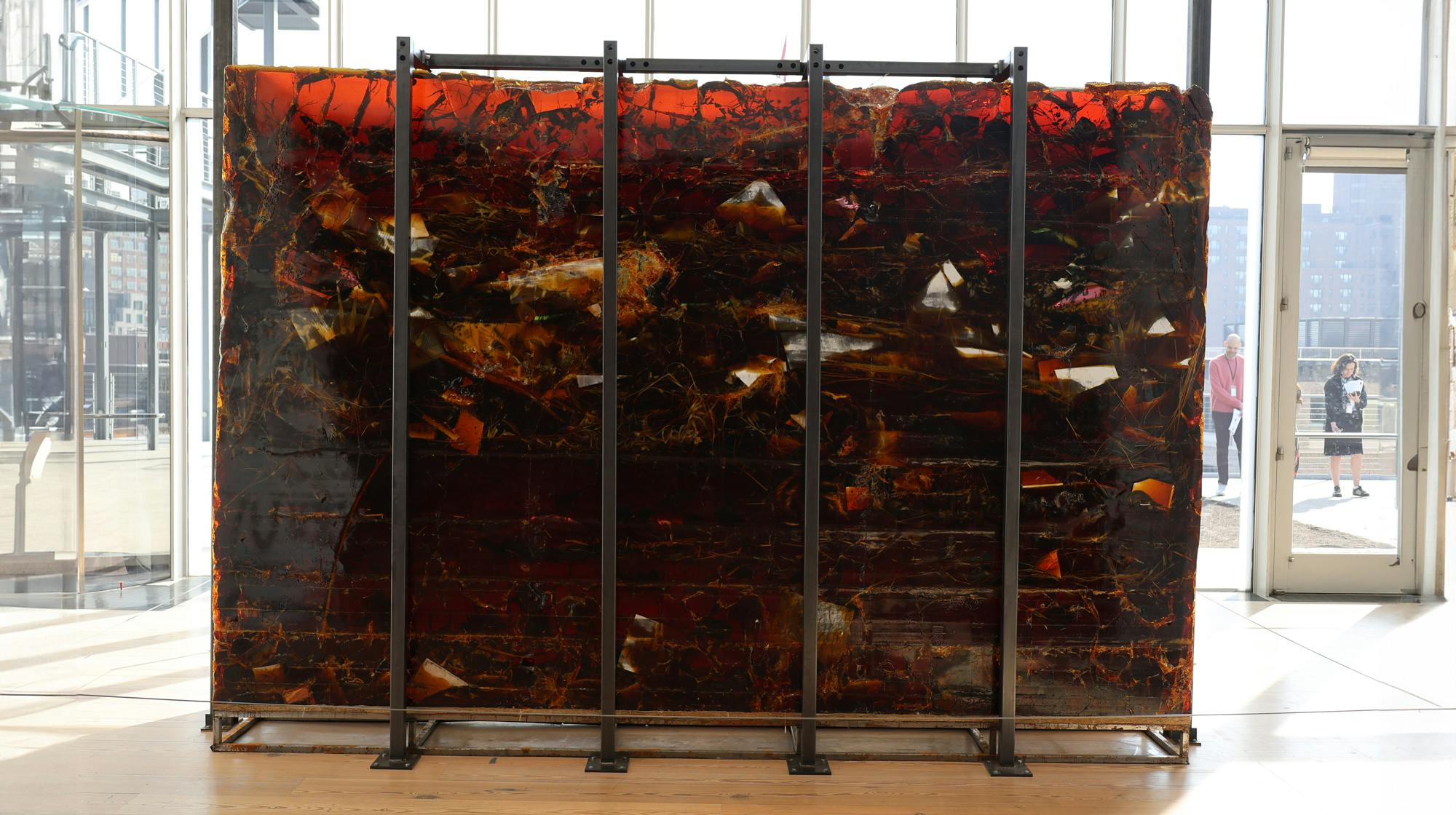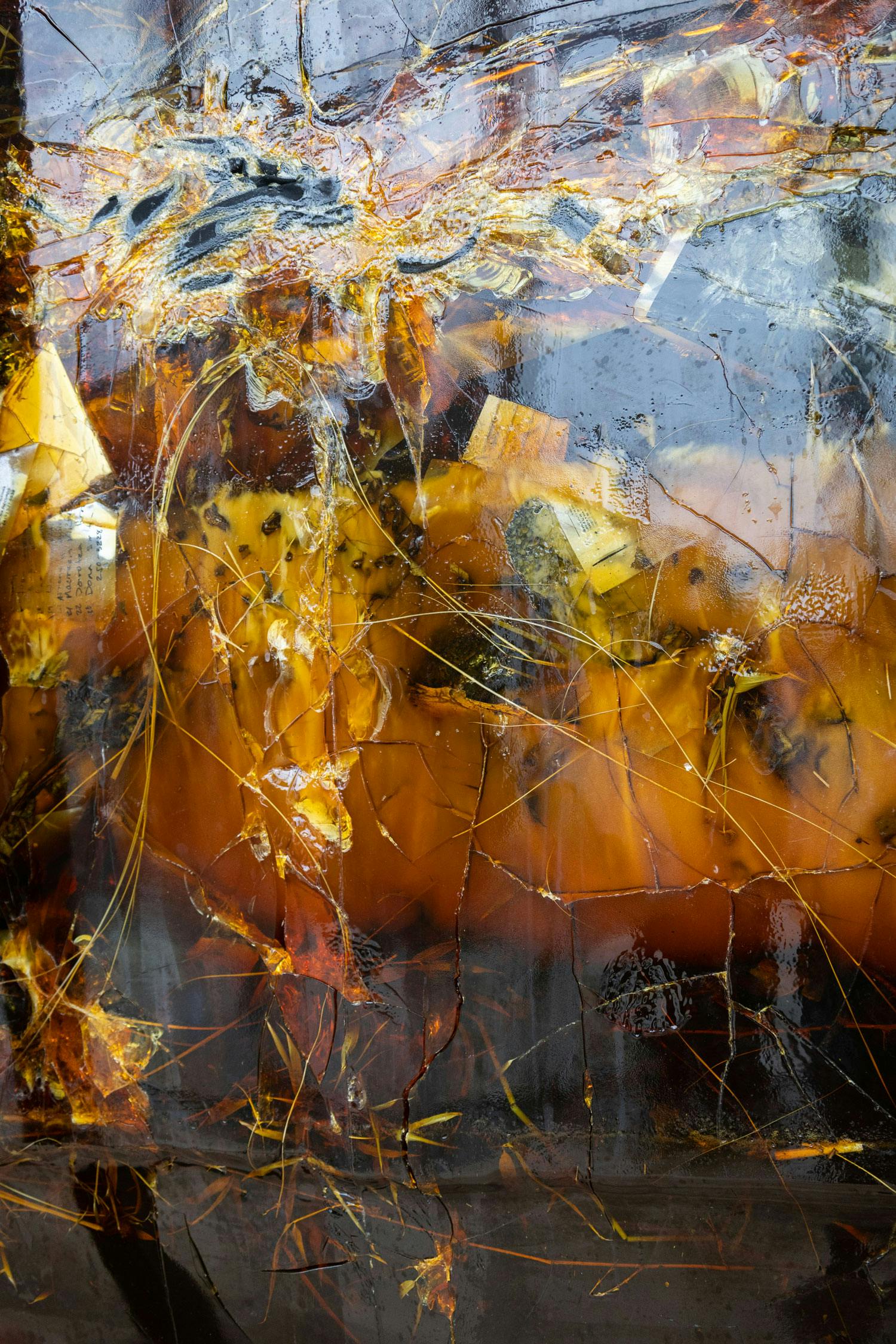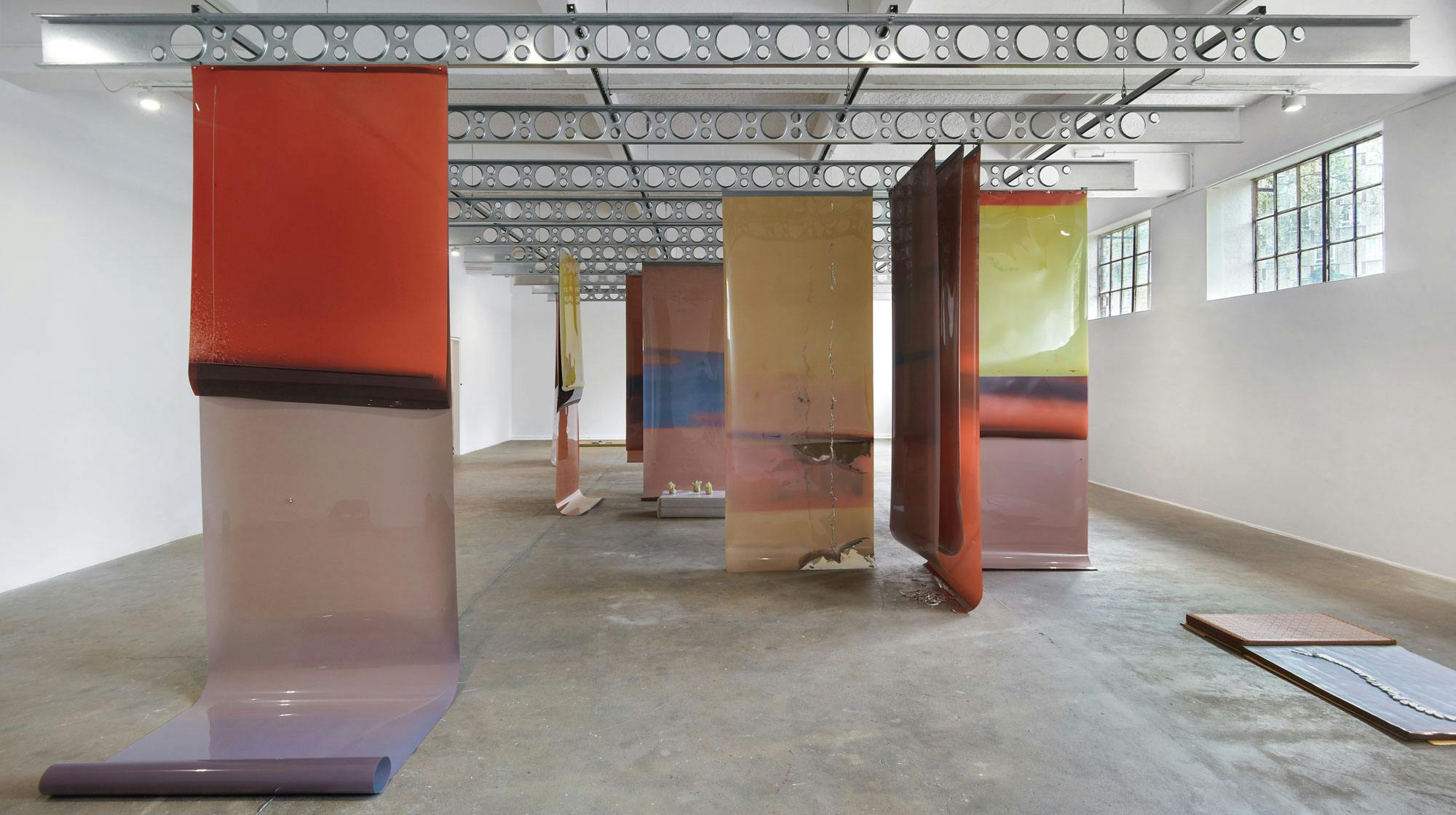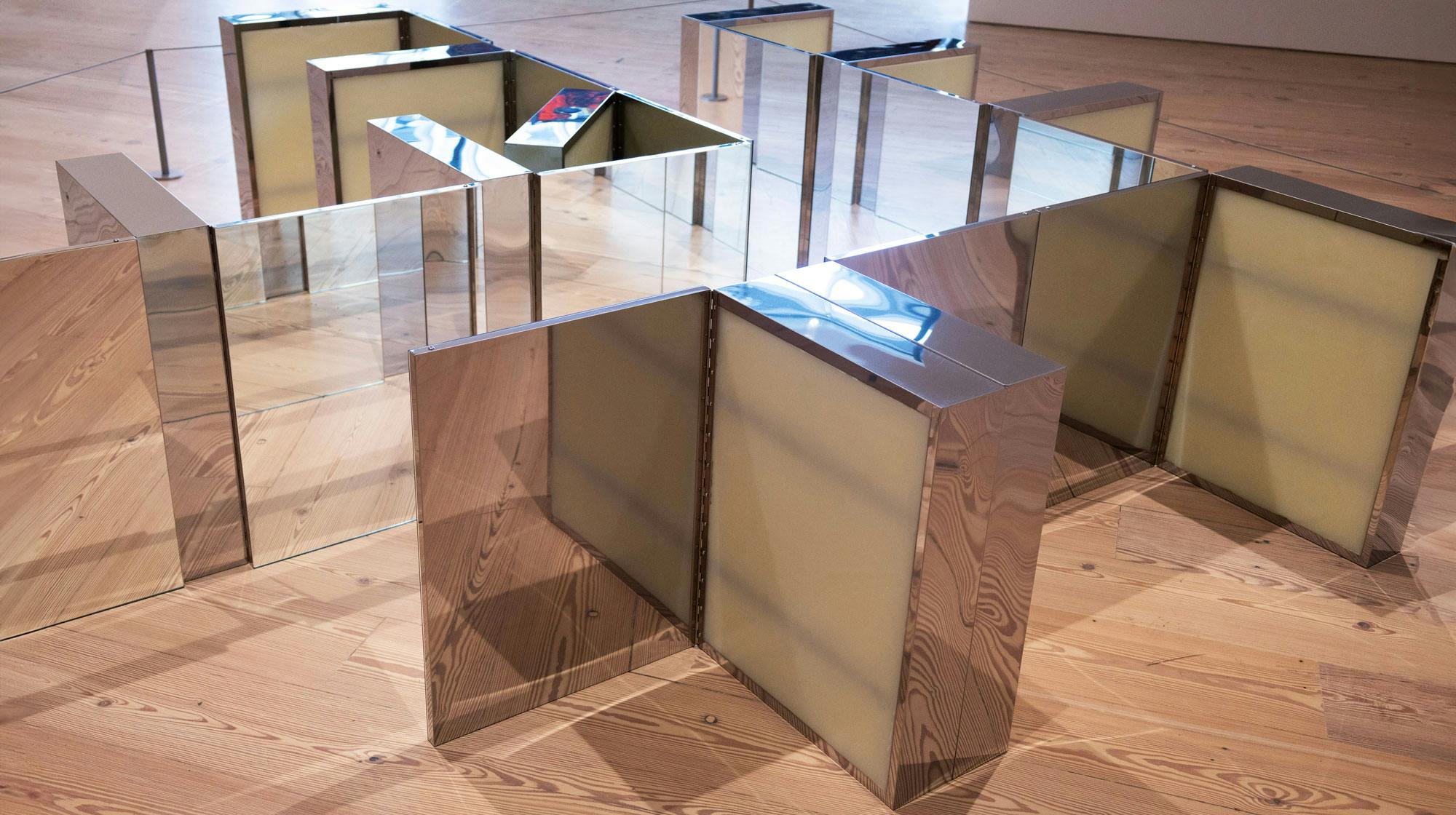Published March 26, 2024
Four Highlights from the 81st Whitney Biennial
The Whitney Biennial is one of the country’s most closely watched exhibitions. Each iteration aspires to take the temperature of contemporary practice: anointing new stars, uncovering overlooked talents, and more often than not, stirring up some controversy or another. This year’s edition, titled Even Better Than the Real Thing, opened to the public on March 20. It is curated by Chrissie Iles and Meg Onli, with Min Sun Jeon and Beatriz Cifuentes. For the film and performance program, which will unfold over the course of the spring and summer, they are joined by guest curators Korakrit Arunanondchai, asinnajaq, Taja Cheek, Greg de Cuir Jr, and Zackary Drucker.
Only 44 artists and collectives fill four floors of the museum – making for an immediate (and refreshing) contrast to the crowded layouts of recent editions. Many artists are given entire spaces to themselves. Initial impressions have also noted the general lack of spectacle: critics have used words like quiet, elegant, polite, and safe. The show is content to dwell with the task of orientation – as in Dionne Lee’s video Challenger Deep, in which she navigates a landscape with dowsing rods – as opposed to making leaps and bounds in any particular direction. The show’s best works invite sustained and sensitive attention: their meaning and politics are transmitted by feel, rather than written on the surface. This impulse is exemplified by Constantina Zavitsanos’s Call to Post (Violet), a ramp that vibrates with an infrasonic score.
As I viewed the show, I was most drawn to works that spoke to the bodily experience of viewing them. Here are four standout presentations from this year’s biennial – the works that made me crouch down, lean in, and stand back.
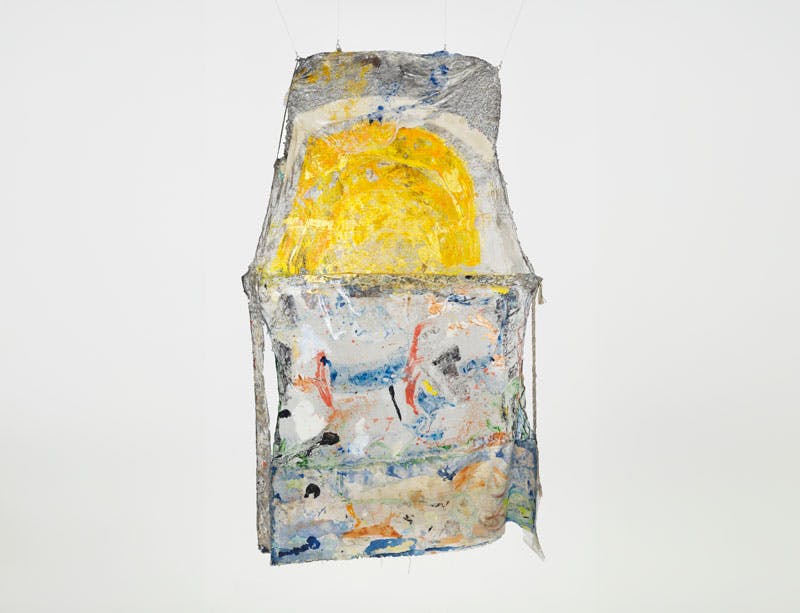
Suzanne Jackson
In a central gallery on the sixth floor, the Savannah-based artist presents eight “acrylic on acrylic” paintings. None are on canvas in the conventional sense. The accumulated pigment clings to whatever it can – pistachio shells, shredded paper, its own tentative solidity – for support. “The paint becomes an armature for itself,” the artist explains in the wall label. The largest of them hang in the center of the gallery: rough-edged with bits of twine and netting; thinning to translucency, in places, and then to nothing.
I wasn’t sure how to respond to the paintings’ corporeality: from one vantage, they seemed impossibly brittle; a moment later, they projected a plasticky sense of durability and strength. The images they evoke are equally complex. One looked to me like a crystallized puddle; another recalled a crushed plastic bag. A section of deepest ocean, what we do not know, we might see? (2021) seemed like the thinnest possible sliver of earth, like backlit veins of crystal within bedrock. But there were also moments of tactile familiarity: Red over morning sea (2021) includes a delightful pattern of concentric red mesh – the plastic mesh that tangerines come in.
Eddie Rodolfo Aparicio
Eddie Rodolfo Aparicio presents a cube of tree amber, embedded with objects. Like Jackson’s paintings, it is semi-translucent and appears malleable: it is meant to change shape over the course of the exhibition. Aparicio has repeatedly returned to amber as a material, partially because of its healing function within trees. The artist is also interested in the entwined ecologies of trees and people, particularly their parallel histories of migration and expulsion in Los Angeles.
Aparacio’s piece in the biennial, Paloma Blanca Deja Volar/White Dove Let Us Fly (2024), encases a panoply of things: blades of grass and leaves, a beer bottle, a pumice stone, crumpled documents. It’s hard to make out the words through the amber’s cracks and fissures: I could glimpse a headline about a massacre; a record of a donation; a letter signed by the Committee of Mothers in Mesa Grande, Honduras. Aparicio’s cube holds history close, preserving and obscuring it at once. As the amber responds to heat and gravity, there’s no guarantee that anything more will be revealed. When I viewed the exhibition, only a few days into its run, there was already a large crack along one side of the cube. I looked inside to find a large hollow space, littered with shreds of amber and stray scraps of wood.
Lotus L. Kang
Kang’s installation for the biennial, In Cascades (2023), includes large sheets of unfixed photographic material hanging from a metal structure. Kang refers to these sheets as “skins” and exposes them to light in a process she calls “tanning.” Their blotches are indices of weathering and wounding, products of both chance and chemistry. The sheets only vaguely refer to a body, and yet I felt something fleshy in their shininess: their surfaces are still slick with something. Some are held together by magnets; one can imagine the marks slowly made by their contact, visible only on the day of a future parting. In Cascades also incorporates sculptural elements arranged on the ground: tatami mats; silvery little fish; lotus seeds and cabbage leaves cast in aluminum. In Cascades is a precisely choreographed installation that remains open to the possibility of change.
Carolyn Lazard
Lazard’s practice has queried the expansive meaning of the word “dependency” at the intersection of disability and capitalism. At the biennial, they are showing Toilette (2024), an installation of mirrored medicine cabinets filled with Vaseline. Removed from domestic space and arranged in formation, the cabinets become a kind of maze or architectural plan. The Vaseline both renders them inoperable and, in a different reading, exaggerates their function. The ointment is flush with the edge of each cabinet, but their inner shelves are faintly visible, as an outline, beneath the surface.
Lazard’s interest in Vaseline lies in its dual function as both a lubricant (facilitating movement) and an occlusive ointment (preventing touch or permeability). Curiously, the installation’s placement on the floor behind a stanchion drew out the material’s ambiguity. I wanted to look closely at the masses of Vaseline, to discern the trace of a hand or a tool. But the stanchion kept me from looking too closely: from a distance, the ointment emitted a depthless glow, and the cabinets reflected little more than the floor. I faintly grasped that Lazard’s work had something to say about that stanchion too: about the indeterminate space between access and opacity, between institutional polish and human touch.
Testudo is always looking for more voices to write with us about the art world. If you’d like to pitch an article, please see our pitch guide for more information!
